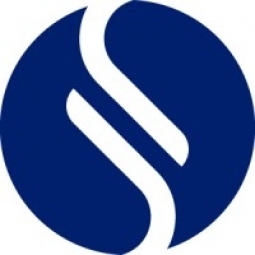Customer Company Size
Large Corporate
Country
- Switzerland
Product
- Sphera Supply Chain Risk Management
Tech Stack
- Supply Chain Risk Management Software
Implementation Scale
- Enterprise-wide Deployment
Impact Metrics
- Cost Savings
- Brand Awareness
- Customer Satisfaction
Applicable Industries
- Chemicals
Applicable Functions
- Procurement
Use Cases
- Supply Chain Visibility
- Regulatory Compliance Monitoring
Services
- System Integration
About The Customer
Clariant is one of the world’s leading specialty chemical companies, contributing to value creation with innovative and sustainable solutions for customers from a variety of industries. Clariant’s portfolio is designed to meet very specific needs with as much precision as possible. They use Sphera Supply Chain Risk Management [formerly riskmethods] to be more risk aware, react faster and manage risk more proactively than ever before.
The Challenge
Clariant, a leading specialty chemical company, recognized supply chain risk management as a megatrend that they would have to manage if they wanted to stay ahead of the competition. They wanted to secure their market position by cooperating with the right suppliers who didn’t pose a threat to their reputation, whether because of noncompliance with regulations, sustainability issues or other reasons. As a chemical company, Clariant can’t produce their products without all the supplies they need—even if that supply is only one tiny component of a much larger product.
The Solution
Clariant uses Sphera Supply Chain Risk Management to identify weak links in their supply chain. Thanks to the interactive world map, they saw that a particular region in their supply chain was vulnerable to disruption, and also observed that the region contained an important single-source supplier. With this information, they were able to take proactive action to source an alternative supplier, and thus prevent the supply chain disruption that would have occurred if their other supplier had been affected by a risk event. Sphera Supply Chain Risk Management [formerly riskmethods] helps Clariant’s procurement function do a better job: preserving and generating real business value and then sharing that value with executive leadership and stakeholders.
Operational Impact
Quantitative Benefit

Case Study missing?
Start adding your own!
Register with your work email and create a new case study profile for your business.
Related Case Studies.

Case Study
Honeywell - Tata Chemicals Improves Data Accessibility with OneWireless
Tata was facing data accessibility challenges in the cement plant control room tapping signals from remote process control areas and other distant locations, including the gas scrubber. Tata needed a wireless solution to extend its control network securely to remote locations that would also provide seamless communication with existing control applications.

Case Study
Advanced Elastomer Systems Upgrades Production
In order to maintain its share of the international market for thermoplastic elastomers AES recently expanded its Florida plant by adding a new production line. While the existing lines were operating satisfactorily using a PROVOX distributed control system with traditional analog I/O, AES wanted advanced technology on the new line for greater economy, efficiency, and reliability. AES officials were anxious to get this line into production to meet incoming orders, but two hurricanes slowed construction.
Case Study
Wireless GPS Tracking & Security Monitoring
Enhancing the security of hazardous freight and ensuring compliance with Homeland Security’s Transportation Security Administration mandate that all trains carrying chemicals capable of creating a toxic inhalation condition are equipped with on-board safety monitoring systems.

Case Study
Field Device Asset Management For Chemical Company in China
Chinese chemical subsidiary of multinational corporation serves customers throughout the world. Sales offices and research and technology centers are strategically located to provide rapid response to customer requests. Just two workers were assigned to maintain thousands of intelligent instruments in three production units, so they could do little more than react to device issues as they appeared. This costly maintenance method inevitably led to unexpected downtime when a critical instrument failed. Plant management recognized the need to change from reactive to predictive maintenance for all assets, including instruments and control valves, but help was needed in implementing such a technology-based initiative.

Case Study
Industrial Workforce Mobility for Improved Safety & Operations
Huntsman Corporation, a global manufacturer and marketer of differentiated chemicals, undertook an aggressive program to eliminate injuries, product defects, and environmental releases at their Port Neches facility. Termed “Project Zero”, this program required a completely mobile solution to empower operations and maintenance personnel to capture defects, track work progress and make process and safety related decisions in real-time.








